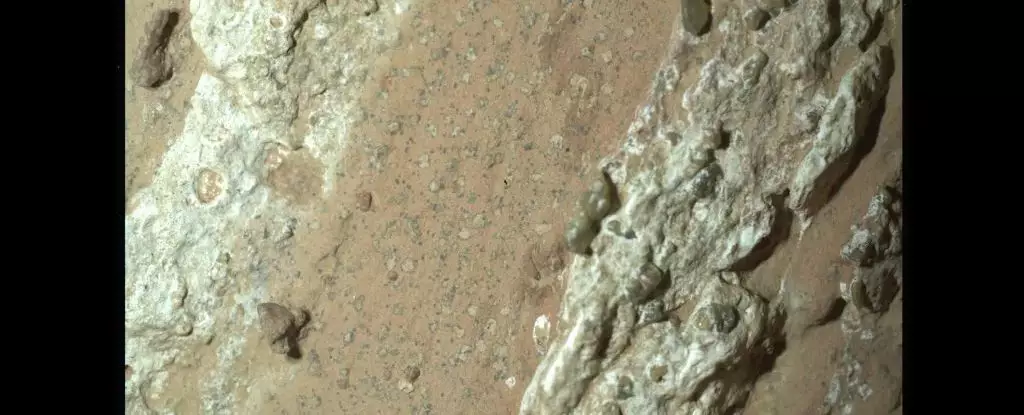Mars, often referred to as the red planet, has long been a subject of fascination for scientists and researchers around the world. Recent discoveries by the Perseverance rover have sparked new interest in the possibility that Mars may have supported life in the distant past. One such finding is a rock named Chevaya Falls, which shows signs of having hosted life-supporting chemistry billions of years ago.
Evidence of Past Life
Chevaya Falls, located on the edge of an ancient river valley, contains veiny sedimentary material that is rich in organic compounds. These materials have leopard-like spots that suggest the presence of chemical reactions similar to those used by chemosynthetic microbes for energy. The discovery of these features has come as a surprise to astrobiologists, as similar features on Earth are often associated with fossilized microbes living in the subsurface.
Potential Habitability of Mars
The growing body of evidence indicates that Mars may have had conditions that were conducive to life as we know it. The presence of water, along with the necessary chemistry for the formation of life’s building blocks, suggests that life could have existed on Mars in the past. Scientists believe that any potential life forms on Mars would likely have been microbial in nature and adapted to low to no-oxygen conditions.
Importance of Perseverance Mission
One of the primary objectives of the Perseverance rover mission is to search for signs of past life on Mars. By exploring regions that were once wetlands and studying sedimentary rocks for biological signatures recognizable to us on Earth, the rover is helping to unravel the mysteries of Mars’ ancient past. The discovery of Chevaya Falls represents one of the strongest indicators of past life on Mars to date.
The samples collected by the rover at Chevaya Falls have revealed organic, carbon-rich material. While organic materials are abundant on Mars, the presence of such materials alone is not sufficient evidence for past life. However, in conjunction with other potentially biological signs, the presence of organic material becomes more significant. The rock’s history of exposure to water and the presence of mineral formations indicative of biological processes further enhance the case for past life on Mars.
While the presence of organic material and mineral formations at Chevaya Falls strongly suggest past life, other geological processes could also explain these features. Repeated exposure to water and volcanic conditions may have produced the observed veins, spots, and inclusions in the rock. The presence of olivine, a mineral that forms in volcanic rock, suggests alternative formation mechanisms that do not necessarily involve microbial activity.
Future Prospects
Perseverance has collected a sample from Chevaya Falls that is waiting in a tube for potential retrieval by a future spacecraft. This sample holds the key to unlocking further mysteries about Mars and its potential for past life. The discovery at Chevaya Falls serves as a strong incentive for future manned missions to Mars, allowing humans to explore the red planet firsthand and potentially uncover more evidence of past life.
The discovery of Chevaya Falls on Mars represents a significant milestone in the search for past life on the red planet. The presence of organic material, mineral formations, and evidence of water make a compelling case for the existence of microbial life in Mars’ ancient past. As scientists continue to analyze the samples collected by Perseverance, the possibility of past life on Mars becomes more tantalizing. The findings at Chevaya Falls may pave the way for future exploration and discovery on Mars, bringing us one step closer to unraveling the mysteries of the universe.


Leave a Reply